The following C function:
int main(void) {
char name[10] = "H";
}
Produces the following (unoptimized) assembly in Compiler Explorer:
main:
pushq %rbp
movq %rsp, %rbp
movq $72, -10(%rbp)
movw $0, -2(%rbp) <--------- ??
movl $0, %eax
popq %rbp
ret
What does the line above do? I would think we would want to null terminal the string by adding a $0 but I don't undertand why it's being added at -2. If helpful, here is a screenshot:
